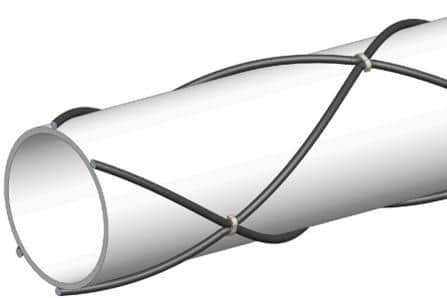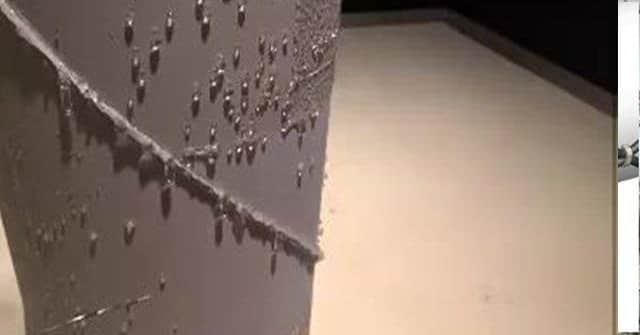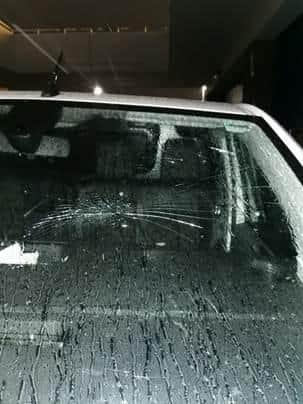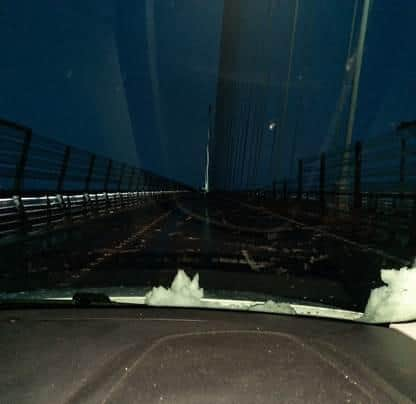Queensferry Crossing ‘ice bombs’: Could snow-repelling cable coatings or mesh be solution?
and live on Freeview channel 276
The results of tests due to get underway in a French lab this week are expected next month, but it is not known how quickly the chosen option to combat ice “accretion” on the bridge could be installed or how long it would take.
Bridge managers have admitted installing coatings or mesh “would not necessarily be any less disruptive or different in duration” than rejected options that could take between six months and two years to put in.
Advertisement
Hide AdAdvertisement
Hide AdThey said the work was likely to involve overnight lane closures, but some traffic restrictions at weekends or off-peak on weekdays might be required.


However, BEAR Scotland, which operates the crossing for Scottish Government agency Transport Scotland, stressed that a key requirement was that it should not be more disruptive than the ice problem, which has closed the bridge three times within a year, one of them for two days.
It is believed to be caused by a specific combination of factors, including temperature, humidity and dew point, when moisture comes out of the air, but does not fall as rain.
Ice can build up on the cables and then fall within 15 minutes, with incidents damaging vehicles and smashing windscreens.
Advertisement
Hide AdAdvertisement
Hide AdOptions to remove it by various heating and mechanical methods have been rejected, although infrared heating has yet to be examined.


BEAR south east Scotland unit bridges manager Chris Tracey told a Bridges Scotland seminar in Glasgow: “For the moment, we are focusing on the chemical side of things and how we can take these forward.”
These include a steel “passive ice mesh” system, and hydrophobic coatings which repel moisture.
They will be tested on a mock-up section of the bridge at the Jules Verne Climatic Wind Tunnel in Nantes in similar conditions to when the “ice bombs” form.


Advertisement
Hide AdAdvertisement
Hide AdTracey said ice stuck to the mesh, “stays there for longer than it normally would and melts naturally”.
He said hydrophobic coatings “repel wet snow and hopefully stop it from bonding".
Wet snow will be fired at the coatings in various states – new, soiled and cleaned, at various temperatures.
A BEAR spokesperson said: “Installation of coatings/mesh/other potential chemical solutions would not necessarily be any less disruptive or different in duration [than mechanical ones which could take up to two years].


Advertisement
Hide AdAdvertisement
Hide Ad"However, it is too early to say as further work will be required to programme the installation of any viable options.
"A key requirement for any potential mitigation measure is that installation and maintenance requirements for retrofit should not be more disruptive than the problem being solved.
"If any potential mitigation measures did require lane closures during installation or maintenance, then we would look to carry out this overnight and possibly off-peak or at weekends.
"We would look to avoid peak-time lane closures and therefore minimise any traffic congestion.”
Advertisement
Hide AdAdvertisement
Hide AdMeantime, all the cables on one of the three towers were cleaned this autumn – without the need for lane closures – to see if more or less ice builds up on them than on the others.
Tracey said: “If cleaning works, this might be the way forward – cleaning every year or couple of years.”


A further trial diversion of traffic via the adjacent Forth Road Bridge will be staged next weekend using slip roads between the crossings.
Neil Greig, the Scotland-based policy and research director of motoring group IAM RoadSmart, said “Most bridge users will be disappointed to hear that a solution for the ice bomb problems of the Queensferry Crossing are still only at the laboratory testing stage.
Advertisement
Hide AdAdvertisement
Hide Ad"We were expecting more urgent action before yet another winter season was upon us.
"If BEAR and Transport Scotland can assure drivers that some coverings and mesh will solve the problem once and for all, then they will probably be willing to put up with some delays during application.
"The key issue now is to put in place a clear timetable for the works and the closures so that we all know when it’s going to happen.”
A message from the Editor:
Thank you for reading this article.
We're more reliant on your support than ever as the shift in consumer habits brought about by coronavirus impacts our advertisers.
If you haven't already, please consider supporting our trusted, fact-checked journalism by taking out a digital subscription.
Comment Guidelines
National World encourages reader discussion on our stories. User feedback, insights and back-and-forth exchanges add a rich layer of context to reporting. Please review our Community Guidelines before commenting.
